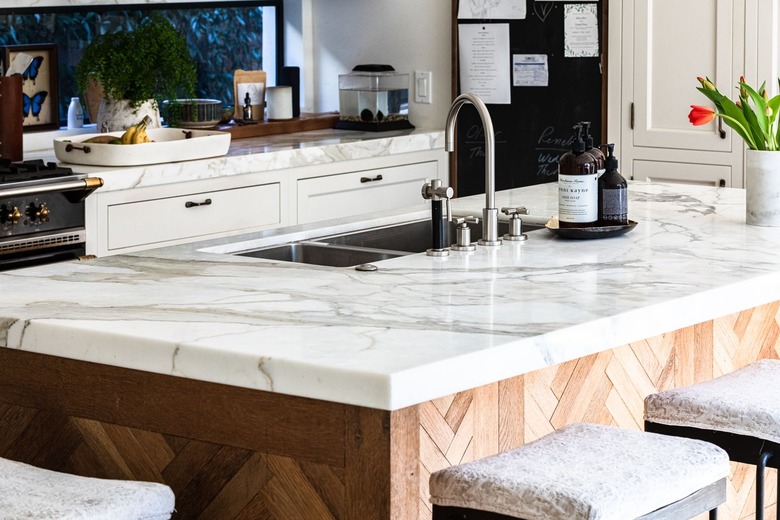The Differences Between Granite And Diorite
If you're considering a stone countertop, stone tiles for the shower or just a decorative piece of natural stone for the living room, granite and diorite are two of the most popular options. These stones are similar in some ways but are certainly not an exact match.
Like other igneous rocks, granite and diorite formed from crystallized molten material, and both are extremely hard and sport a mottled pattern. They are also somewhat porous and need a finish when used in a wet location.
According to Countertop Guides, granite and diorite cost about the same, but to understand why they aren't interchangeable, you need to appreciate the finer points of each type of rock. That will help you decide on the right stone for your home decor needs.
What Are Granite and Diorite?
Granite is a type of crystalline igneous rock that is used in the construction of many things. Composed mostly of quartz, mica and K-feldspar, granite is celebrated for its hardness and durability. When used in outdoor construction, granite can be seen in a number of different types of structures, including buildings, bridges, monuments and even in paved roads and surfaces.
Most people are familiar with granite for its pink, black and white speckled look. Polished versions of the stone are commonly used as kitchen countertops, making it a cost-effective alternative to marble.
Diorite is also a type of igneous rock and is similar in composition to granite and basalt although not identical. Diorite is known for being coarse in texture and is known for its ability to assist with drainage and erosion management.
Unlike granite, which often has pink flecks throughout, diorite is characterized by its black, white and gray mottled look. Because diorite usually contains little to no quartz, it will obviously lack the visible crystals within that make granite so appealing, although polished diorite can offer a shiny surface sometimes used for counters or floor tiles.
Similarities and Differences
According to Geology.com, granite and diorite are both examples of intrusive igneous rocks, and they are sometimes mistaken for one another (more often, diorite is incorrectly labeled as granite rather than the other way around). However, there are several key differences between them.
The most obvious difference between granite and diorite is that diorite usually contains little, if any, quartz, whereas granite is composed mostly of quartz. Another way the two types differ is in their formation. Granite forms when continental rocks melt together, while diorite is created when various crystals converge with lava below the earth's surface.
Granite and diorite do have some things in common, however. They are both types of hard, igneous rock, and is each known for its durability. The speckled look of both of these rocks makes them an appealing choice for indoor fixtures, and it is not uncommon to find either of the two in bathrooms, kitchens or used as floor tiles inside homes.
Other Types of Stone
While granite and diorite are two very popular types of stone for both indoors and outdoors, there are several other varieties to consider if you have a project in the works. One such stone is gabbro, which looks almost like a darker, coarser version of diorite.
Similar to granite in some ways — they are both coarse-grained, intrusive igneous rocks — the difference between granite and gabbro is that gabbro is much darker in color than granite. It also contains very little quartz, although it is sometimes used for interior pieces when polished.
Similar to gabbro is basalt, which is very dark in color and features very little lightly colored crystals, if any. Like gabbro, granite and diorite, basalt is an igneous rock and it's also the most abundant bedrock on the planet, including under the surface and within ocean basins. What's the most obvious difference between basalt and gabbro? Grain size. Basalt rocks have fine-grained crystals, while gabbro is made up of much larger, coarse-grained pieces.
